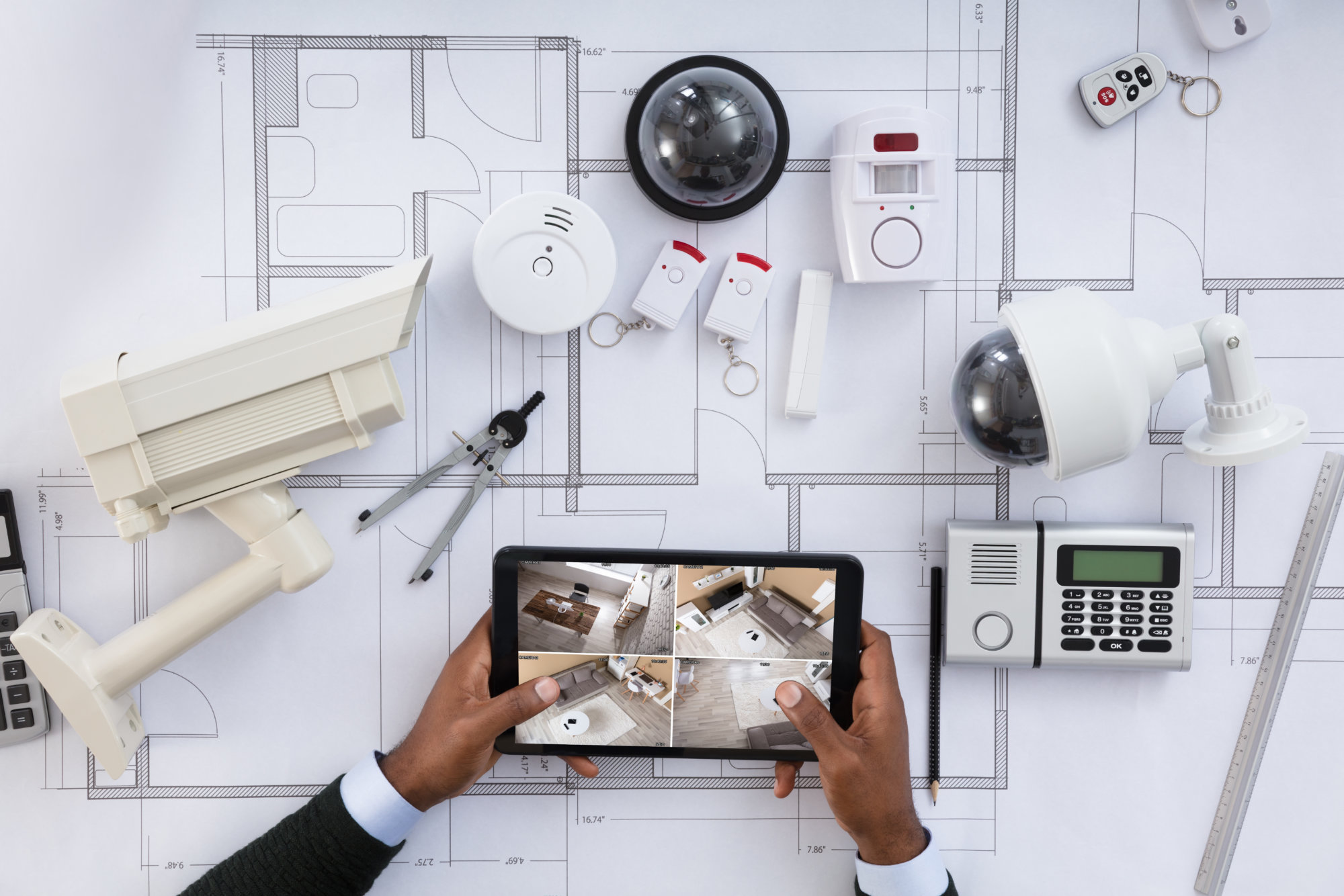What Is A Home Security System?
- Security camera: Smart security cameras hook up to Wi-Fi, enabling us to livestream footage of our system remotely and receive notifications when our cameras detect movement, people, or packages. Many cameras include infrared or color night vision, cloud or local storage, and two-way audio, which allows us to speak to whoever is on camera. Some cameras also have smart platform integrations such as Amazon Alexa or Google Assistant.
- Motion sensor: Motion sensors should be placed in a main entryway or hallway on the ground floor of a home so that they can detect motion and alert us when our system is armed. Some motion sensors are sensitive to pets, so they don’t go off every time our dog walks by.
- Entry sensor: Also known as contact sensors, entry sensors have two parts: one that goes on the window or door and another that goes on the frame. These sensors use magnets to determine when one of these entrances is opened or closed. If the sensor thinks an entry point is opened, it alerts us. We suggest placing entry sensors on windows or doors on the ground floor. The majority are battery-operated, and many even have adhesive backings for easy installation.
- Glass break sensor: Sometimes, instead of opening windows the old-fashioned way, intruders will simply break them open to avoid setting off the entry sensors. However, a glass break sensor also detects the sound of glass breaking and alerts us via mobile notification.
- Siren: Sirens exist in home security systems both on their own and as part of other devices, such as the base station (which we’ll get to below). Sires often go off at the same time as other alarms and are intended to scare intruders away or alert our neighbors.
Types of Home Security Systems
There are a few major types of home security systems:
- DIY: With DIY home security systems, the user puts it together themselves and most likely monitors the system themselves through its respective mobile app. However, some DIY systems can have professional monitoring, so the categories aren’t necessarily mutually exclusive.
- Professional: A professional home security system can mean one of two things. One, it can mean professional installation, meaning that a technician installs the equipment. Or two, it can mean a system with professional monitoring, meaning that a team of people responds to alerts from call centers. Again, some professionally monitored systems can also be self-monitored or installed DIY, so these categories aren’t binary.
- Wired: A wired security system is one that is hardwired into a home’s existing electrical system.
- Wireless: A wireless security system, on the other hand, doesn’t have any wires and instead depends on a combination of batteries, Wi-Fi and/or cellular backup to connect to the app and monitoring center, if applicable. Wireless security systems are easier to install than wired systems, but you’ll need to either change or recharge the battery.
- Smart: Smart security systems are connected to the internet, allowing the user to view live footage from a mobile app, receive notifications when alarms go off and control the system remotely.





